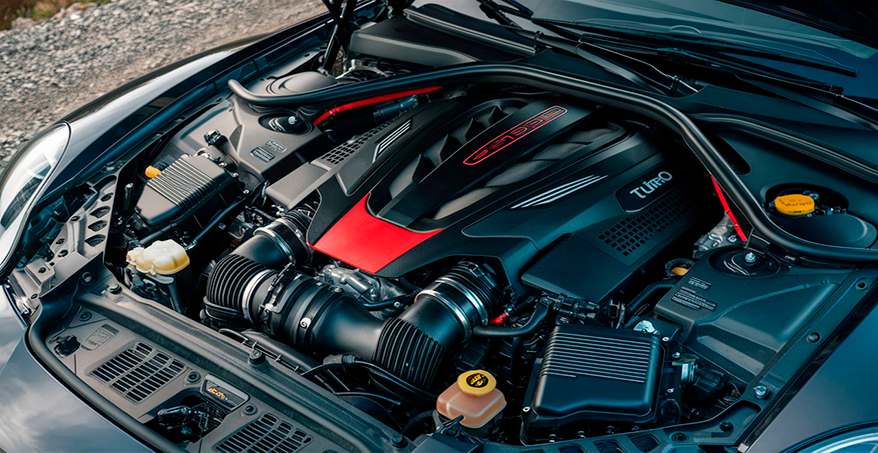Discover how smaller engines are revolutionizing the American car market with cutting-edge technology, superior efficiency, and environmental benefits.
The automotive world is undergoing a remarkable transformation. Once dominated by gas-guzzling V8s and roaring inline six-cylinders, the American car market is increasingly favoring smaller, more efficient engines. This shift isn’t just a passing trend—it’s a revolution influenced by technological advancements, environmental concerns, and changing consumer priorities. If you’re an auto enthusiast or a curious buyer, understanding this evolution can help you make smarter decisions.
Let’s dive deep into why the move toward smaller engines is reshaping the roads in the USA.
The Rise of Smaller Engines: Why It’s Happening
1. Stricter Emissions Standards
One of the primary reasons behind the trend toward downsized engines is stricter environmental regulations. The U.S. government, along with global accords, has implemented more stringent fuel economy standards and emissions limits. Manufacturers are now compelled to produce vehicles that consume less fuel and emit fewer greenhouse gases.
Turbocharging and hybrid technologies are enabling smaller engines to deliver the power of larger counterparts while meeting these regulations. For instance, a 1.5-liter turbocharged engine can now rival the performance of a traditional 3.0-liter naturally aspirated motor.
2. Advancements in Engine Technology
Gone are the days when smaller engines meant sluggish performance. Innovations like direct injection, variable valve timing, and electric-assist turbos have revolutionized engine efficiency. Automakers are investing heavily in research to ensure smaller engines deliver impressive horsepower, torque, and durability.
Brands like Ford, with its acclaimed EcoBoost line, and Honda’s Earth Dreams Technology, are leading examples of this evolution, showcasing how small engines can be both efficient and thrilling.
3. Rising Fuel Costs
With fluctuating gas prices, consumers are more mindful of fuel efficiency. Compact engines, especially those in hybrid or plug-in hybrid electric vehicles (PHEVs), significantly reduce fuel consumption without compromising performance. This makes them an appealing choice for the budget-conscious driver.
For example, models like the Toyota Corolla Hybrid and the Ford Maverick Hybrid highlight how small, efficient engines can balance affordability and functionality, even for American families.
Benefits of Smaller Engines
1. Fuel Efficiency Without Sacrificing Power
Modern engineering ensures that today’s small engines don’t compromise on performance. Turbochargers and advanced fuel management systems allow compact engines to deliver high power output when needed, while sipping fuel conservatively during regular driving.
2. Environmental Benefits
Smaller engines inherently produce less carbon dioxide. When paired with electric assist or hybrid systems, they make a significant contribution to reducing the carbon footprint. Consumers opting for these engines play a direct role in combating climate change.
3. Cost Savings Over Time
Though many of these vehicles may have a slightly higher upfront cost due to advanced technology, the savings on fuel and potentially lower maintenance costs make them an excellent investment in the long run.
Challenges and Misconceptions
1. Are Smaller Engines Durable?
A common misconception is that smaller engines wear out faster. However, with innovations like forged internal components and improved cooling systems, these engines are built to last. Regular maintenance is crucial, just as it is with any engine.
2. Performance Anxiety
Some drivers fear that smaller engines lack the thrill of a V6 or V8. While they may lack the raw sound and torque of traditional larger engines, modern small engines can still offer exhilarating acceleration and a responsive drive.
The Role of Electric Vehicles in the Transition
As the industry moves toward electrification, small engines are becoming stepping stones in this transition. Many automakers are pairing small internal combustion engines with electric motors to create plug-in hybrids or mild hybrids. These vehicles not only deliver incredible efficiency but also bridge the gap between traditional gas-powered cars and fully electric models.
What This Means for the American Car Buyer
The shift toward smaller engines offers American consumers a wider variety of choices. Whether you’re looking for a compact commuter car, a family SUV, or even a rugged pickup, there’s likely a smaller-engine option that meets your needs. By embracing these modern innovations, you’ll enjoy better fuel economy, lower emissions, and the satisfaction of driving a car that’s in tune with the future of transportation.
Why Smaller Engines Are the Future of the Automotive Industry
The move toward smaller engines isn’t just a reaction to regulations—it’s a sign of progress. By adopting cutting-edge technologies, automakers are proving that size doesn’t define power or reliability. For U.S. drivers, this shift means a future filled with vehicles that are more efficient, environmentally friendly, and cost-effective.
From turbocharged performance to hybrid innovation, smaller engines embody the next chapter of automotive evolution. The days of sacrificing power for efficiency are over. Today’s smaller engines deliver the best of both worlds, paving the way for a cleaner, smarter driving experience.


